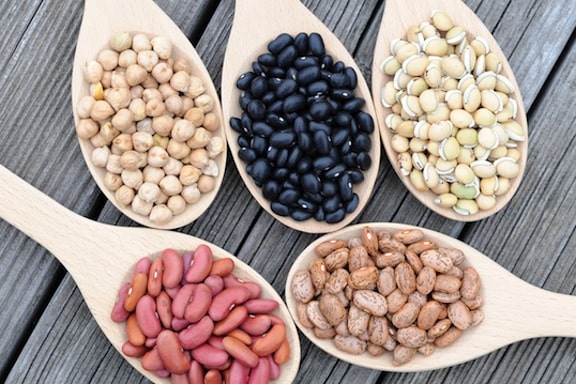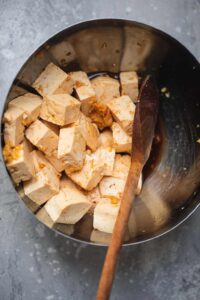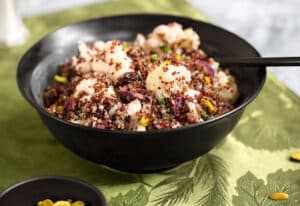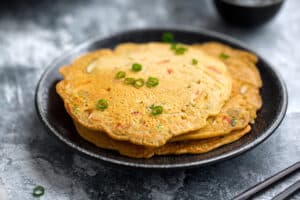Beans and legumes are nutritional powerhouses, rich in protein and fiber, and very low in fat. They boast a slew of vitamins (B vitamins in particular) and essential minerals (notably iron). If you're among the uninitiated, the following guide should demystify beans for you. If you're a bean aficionado, take a look for new information and tips. To get you primed to add more beans to your repertoire, here are VegKitchen's categories for delicious, high-protein bean recipes:
CANNED BEANS
If time is an issue (it often is in my life, as I’m sure it is in yours), I'd rather reach for canned beans than forgo the pleasure of using them. The essential difference between canned beans and those you cook yourself is the sodium content in the former, which can be pretty high. Drain and rinse the canned beans well before using them to reduce the sodium, and use caution when adding any extra salt to the dish in which they are used.
For a high-quality alternative, try the organic cooked beans available in natural food stores. I prefer canned chickpeas to home-cooked, which take an inordinately long time to become tender, and are not as tasty. For the best possible scenario when it comes to canned beans, look for BPA-free cans. Eden foods is one company that uses BPA-free cans for its many varieties of beans.
COOKING BEANS
Preparation time for cooking beans is minimal, though the beans themselves take their sweet time to cook. It's worth cooking your own if you need a large quantity for dishes like black bean soup or red beans and rice. You can also control the amount of salt and seasonings that go in.
There are several ways to cook beans: conventional soaking and cooking, pressure cooking, and slow crockpot cooking. Cooking time is determined by several factors, including simmering temperature, soaking time, the size and freshness of the beans, and even the altitude at which you live. Every cup of dry beans yields about 2 l/2 cups cooked.
CONVENTIONAL SOAK-AND-COOK METHOD
1. Rinse and sort the beans, removing discolored or shriveled ones. Combine them in a large pot with three to four times their volume of water. Cover and soak overnight (during warm weather, soak in the refrigerator to prevent spoilage). Or, cut soaking time by using the quick-soak method: Bring the water and beans to a boil, turn off the heat, and let stand, covered, for an hour or so. Note that some legumes, notably lentils and split peas, don't require soaking.
2. To reduce the gas-producing quality of beans, replace soaking water with fresh water before cooking. The fresh water should be about double the volume of the beans. You can add spices at this point, but don’t add salt yet, nor any other acidic foods such as tomatoes or lemon juice; they harden the skins and lengthen cooking time. Add these only once the beans are tender.
3. Bring the water and beans to a rapid simmer; then lower the heat, cover, and simmer gently. Leave the cover slightly ajar to prevent foaming over. Cooking the beans slowly and thoroughly develops good flavor, prevents the skins from bursting prematurely, and assures better digestibility. Beans are done when they mash easily between thumb and forefinger.
PRESSURE-COOKER METHOD
Pressure cooking greatly reduces cooking time and is not the treacherous appliance once feared. You'll do fine if you follow the manufacturer's instructions and make sure the vents on the cooker aren't clogged by foam. The risk of foaming is greatly reduced if you fill the pressure cooker no more than one third full with water and beans, and add a tablespoon of oil.
Certain legumes—split peas, lima beans, fava beans, and soybeans—aren’t always recommended for pressure cooking because they foam excessively. Cookbooks by Lorna Sass deal extensively with pressure cooking beans and other natural foods. Please defer to her expertise if you’d like to learn more on the subject.
SLOW-COOKER METHOD
Beans cooked in a slow cooker (otherwise known as a crockpot) turn out beautifully tender and digestible, with a thick broth. Follow specific instructions provided by the manufacturer. Soak first, then drain. To cook, allow four parts water to one part beans. To make a tasty broth, add chopped onions, garlic, a bay leaf or other dried herbs to taste. Bring the water to a boil in the cooker, then set it at high. Cover and cook for six to eight hours.
- For lots more features on healthy lifestyle, explore VegKitchen’s Healthy Vegan Kitchen page.
- Here are more of VegKitchen’s Natural Food Guides.







Comments
No Comments